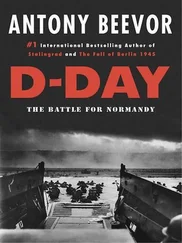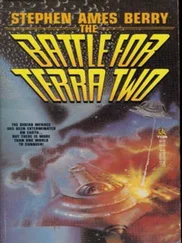Meanwhile, the Marianas disaster made it plain to General Kuribayashi that he could not prevent the enemy from landing on Iwo. Obviously, the Americans had too many ships, planes, guns and men for that. But Kuribayashi was one of Japan’s most intelligent strategists. He devised a new battle plan which departed from the usual Japanese methods of dealing with invasion from the sea.
Throughout the war, the Japanese strategy for defending an island had been to “destroy the enemy at the water’s edge.” That meant trying to prevent them from landing. If, however, the enemy did make a successful landing, then the Japanese hit them hard during the night with a wild bayonet charge. Because the Japanese soldiers screamed, Banzai!” as they charged forward, these night attacks became known as banzai charges. They never succeeded, however. In fact, the Japanese would lose so many men in one of these banzai charges, that they wouldn’t have enough troops left to defend their island.
General Kuribayashi intended to do just the opposite. He would let the Americans land unopposed. He would give them about an hour to become packed and crowded on the flat, black sands between Mount Suribachi in the south and his own headquarters on the high ground in the north. Then he would open up with every weapon he had and turn Iwo’s middle ground into a fearful slaughter pen. To do this, he began to transform Iwo Jima into what was to become one of the strongest fixed positions in the history of warfare.
In the south, under Suribachi, the Japanese began to build a seven-story gallery. Caves five feet wide, 35 feet long and five feet high were dug into the sides of the mountain. All the entrances were angled to guard against enemy fire, and the caves were cleverly vented at the top to draw off steam or sulphur fumes. Sometimes, as the Japanese soldiers worked to build their honeycomb of concrete and steel, the heat from the volcano forced the temperature up to 160 degrees. Into these positions the general put much artillery and about 2,000 men.
In the middle ground off the landing beaches he put perhaps another 1,500 soldiers. Here, they built numerous machine-gun positions with thick walls and roofs of reinforced concrete. These fortifications were made to look like innocent hummocks of sand.
The remainder of Kuribayashi’s 21,000 men and guns went into the high ground in the north. Two heavy lines of forts, pillboxes and tunnels were built across the island. Giant blockhouses were constructed. Natural caverns, big enough to hold whole companies, were reinforced and electrified. Even little cracks in the rock were widened to hold single snipers. Tunnels ran everywhere, connecting the various positions, and all this construction was cleverly concealed so that the attacking Americans would not know that they were inside a network of guns until they were under fire.
In addition, General Kuribayashi made it plainly known to his soldiers that he expected them to fight to the death. He issued the “Iwo Jima Courageous Battle Vow,” which the men recited regularly:
Above all else we shall dedicate ourselves and our entire strength to the defense of this island.
We shall grasp bombs, charge the enemy tanks and destroy them.
We shall infiltrate into the midst of the enemy and annihilate them.
With every salvo we will, without fail, kill the enemy.
Each man will make it his duty to kill 10 of the enemy before dying.
Until we are destroyed to the last man, we shall harass the enemy by guerrilla tactics.
General Kuribayashi also was very strict about cover and concealment. Every position had to be underground or fortified. He gave orders that, when the American warships and airplanes began their preinvasion bombardment, the Japanese guns were not to fire back and thus give away their positions. Because of the general’s precautions, the Navy and the Air Corps mistakenly believed that they had knocked out many enemy targets.
The Marines who were to take Iwo Jima had no illusions, however. Most of the officers and men of the Fifth Amphibious Corps, made up of the 3, 4, and 5 Marine divisions, were veterans of the Pacific War. They had been at Bougainville or the Marshalls or the Marianas, as well as many other islands, and they knew that a concrete pillbox is destroyed only by a direct hit. This is difficult for naval guns to achieve, for they fire on a flat line, and airplanes are usually too high to drop their bombs directly on top of a pillbox roof.
No, the Marines knew that in the end they would have to do the job. They would have to go in on foot with rifle and grenade. They knew, too, that all 70,000 of them would be needed to defeat 21,000 well-protected, well-hidden, well-armed Japanese. In assault from the sea, the invading force usually needs a five-to-one superiority. Yet, on a little island like Iwo, it can be dangerous to have too many men in one place. Too great a concentration of troops may offer the enemy too many targets. That was why General Kuribayashi had perhaps just the right number.
So the Marines knew that they had drawn the toughest mission in their long and glorious career. And no one knew this better than Lieutenant General Holland M. Smith, their commander. General Smith looked like a college professor, with his gold-rimmed eyeglasses, big nose and gray mustache. But he had a hot temper, which had earned him the nickname of “Howlin’ Mad” Smith. Even so, General Smith was very fond of his Marines. There were tears in his eyes when he announced that there would probably be 15,000 dead and wounded at Iwo. “We have never failed,” he said, “and I don’t believe we shall fail here.”
Major General Harry Schmidt was to command the Marines once they were ashore. A stocky, silent man who often scowled, he told the reporters: “We expect to get on their tails and keep on their tails until we chop them off.” General Schmidt’s plan was to attack two divisions abreast, with a third in reserve. The 5 would go in on the left, the 4 on the right.
Major General Clifton B. Cates led the 4. One of the oldest “salts” in the Marine Corps, he had fought at Belleau Wood in World War One and had commanded a regiment on Guadalcanal. He was a soft-spoken man who was tense before a battle, but once the fighting began, he relaxed. Cates’s 4 Division had been given the dangerous assignment of landing beneath the guns of the northeastern cliffs, and the general was so struck by the enormity of the task that he said: “You know, if I knew the name of the man on the extreme right of the right-hand squad of the right-hand company of the right-hand battalion, I ‘d recommend him for a medal before we go in.”
The 5 Division, which was to attack on the left and capture Suribachi, had never been in battle before as a unit. But many of its Marines had combat experience. One of these veterans was “Manila John” Basilone, the gallant sergeant who had won the Medal of Honor on Guadalcanal. Major General Keller Rockey commanded the 5. He, too, was a veteran—but of Belleau Wood. Now, big Keller Rockey was eager to earn another set of spurs in this war.
The 3 Marine Division was to be in “floating reserve.” That is, its units would stay aboard ship off Iwo until they were needed to turn the tide of battle or to relieve some tired units. Major General Graves B. Erskine led the 3. He was a strong, handsome man, and his Marines had nicknamed him “The Big E” after the famous aircraft carrier Enterprise.
Commanding all of these men, as well as all of the ships and sailors of the fleet, was Vice Admiral Richmond Kelly Turner. One of the saltiest American sailors afloat, Admiral Turner had also led the amphibious force that invaded Guadalcanal in August, 1942, to begin the American counterattack across the Pacific. His job was to get the invasion force safely to Iwo Jima and to keep it supplied and protected after it was put ashore. Sharp-tongued, beetle-browed, given to prowling the bridge of his flagship in an old bathrobe, Kelly Turner was the kind of perfectionist who would not hesitate to tell a coxswain how to handle his boat. He had asked for “only three good days” at Iwo, and he was delighted that the first day was one of these. That fateful morning the welcome news was broadcast to the fleet from his flagship, Eldorado: “Very light swells. Boating: excellent. Visibility: excellent.”
Читать дальше











